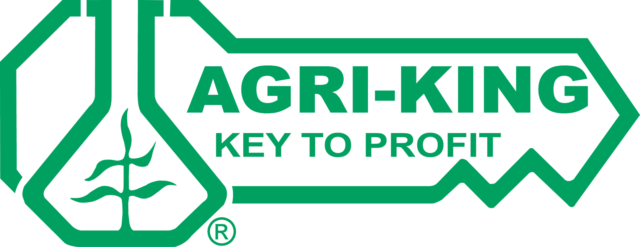This can lead many of you to ponder the question: Can cows use snow as a water source? The answer is: Yes.
Many ranchers across the West and Midwest are capitalizing on snow as a resource to help extend the grazing season. Though it may sound simple, there can be serious consequences, especially if the cow herd is new to the practice or the weather doesn’t cooperate.
Research has shown that the use of snow in place of water does not have an effect on the cow herd’s overall performance. In one particular study, Don Adams at the Range Research Station in Miles City, Montana, fitted a group of cows with electronic identification tags to monitor their individual water intake.
Of those cows, he discovered that 65 percent of the group came to water every day, while others came every second or third day, and some never drank from the water source during the entire four-month study.
“It can be done, but it requires paying very close attention to ensure the cattle are getting enough water,” says Rachel Endecott, a beef specialist at Montana State University. “It definitely won’t work on every operation.”
It’s a learned behavior
Endecott explains that not only is snow hard to rely on, but eating snow is a learned behavior that not all animals pick up. It may take several days or even weeks for a cow to grasp the concept, while some cows may never learn, she says. It is critical that you carefully monitor the herd throughout the winter season looking for any sign of physical stress.
In addition, the snow must be clean and easily accessible for this to work. Cows will use their tongues to gather snow in a motion similar to grazing, she says. If the snow is ice-crusted, dirty, windblown or trampled, the snow becomes difficult for them to eat. There must be enough snow to meet the animal’s needs; however, the amount of snow can’t be so deep that it covers up the feed, she says.
“Cattle will not paw for feed like horses,” says Jim Keyes, a regional beef specialist at Utah State University. “They try to dig through the snow with their noses, and they often will become so sore they quit foraging. So you have to have enough snow to provide adequate water but not so much that it covers the feed.”
A good rule of thumb is that it takes about 8 inches of snow to yield 1 inch of water, Keyes says. As with any animal, dehydration can kill an animal faster than starvation. It is important that you are paying close attention to the animal’s body condition score and overall health; failure to do so can lead to a serious animal welfare issue.
Keyes recommends that beginners should avoid implementing heifers into the program. He says older cows tend to pick up on the concept much faster. Unless heifers were introduced to snow as a water source when they were calves, they will continue to seek an alternate source.
As always, maintaining the health and welfare of the cattle must be the top priority. Snow as a sole water source is not recommended for lactating cows, thin cows or cows on a poor nutritional plane. Keyes recommends having a secondary water source available in case the conditions change and there isn’t enough snow to meet the herd’s water requirements.
A success story
It has been said that relying on snow as a water source can allow you to use your land more effectively. For the 475,000-acre Padlock Ranch nestled on the border of Montana and Wyoming, it’s no longer a rumor; it’s a fact.
Like many ranches, the Padlock Ranch has areas that are well-watered and areas that have either a quality or quantity issue. So to help mitigate those areas, the crew decided to use snow as a secondary water source to help improve the overall production of the ranch.
“We use the snow to meet at least a part of the herd’s water requirements, but one thing we don’t do is rely on snow for their sole water source,” says Trey Patterson, the manager at Padlock Ranch. “We use their ability to do that to help us with grazing utilization and to use up parts of the ranch that are more difficult to get use of.”
A major issue at Padlock Ranch is water palatability. Not only does sulfur make the water less palatable, but at high levels it can cause diseases, and can reduce performance and lower water intake. In other areas of the ranch, water isn’t available. And because hauling water to these areas is almost impossible, and drilling wells was a pricey process, these areas of the ranch were hardly used.
Patterson explains that some parts of the Padlock Ranch had the capacity to winter 1,000 cows, but the water situation was only adequate for about 500 cows. However, in a year with a fair amount of snow, they could run close to 750 cows because those cattle were able to consume snow as part of their water source.
“Now, if they don’t want to go out there, they don’t have to,” Patterson says. “In our system, we want to make sure that we always have water for them because I think for every animal out there using snow there is about one or two that won’t,” he says. “Let’s say you have a pasture that has a couple of wells in it, but there are areas that are 2 to 3 miles from water.
In the summer or in a dry winter, you will never get cattle out to the corners of those pastures. They won’t go out to those areas because the distance to the water is too long. If you have snow out there, cows will go out and use those areas that are further away, and you can entice them with supplements. It has definitely worked for us.”
If there is not enough snow to augment the cattle, the Padlock Ranch crew knows they cannot run as many cattle on those areas. Patterson says they are prepared to move them to another area where water is readily available.
He encourages you, if you’re thinking about implementing this into your operation, to really weigh the advantages and disadvantages, and to make sure the conditions are suitable for this type of management. The benefits of pasture utilization, reduced costs and, in some situations, reduced labor will be for nothing if the herd’s health is in jeopardy.
“You have this positive relationship between water and feed intake,” he says. “If they are getting water, they are eating. If they’re not getting water, they’re not eating. It is that important.” ![]()
PHOTO 1: It is important that you check cattle regularly to make sure they are in good condition. Don’t hesitate to switch approaches if conditions change. Photo courtesy of Trey Patterson.











